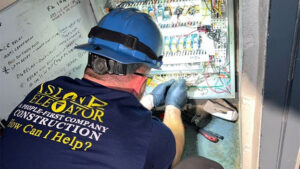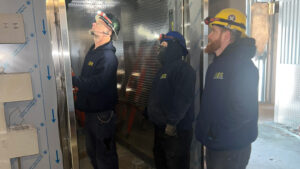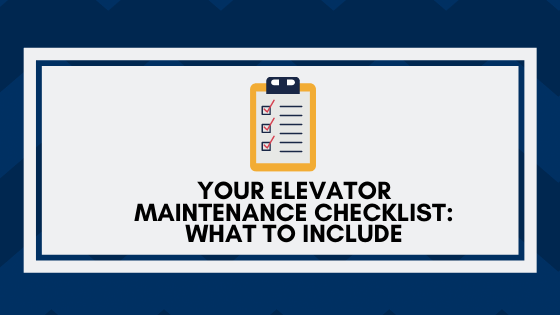

Every year around thirty people die by elevator in some way. One of the easiest ways to keep people safe on elevators is by performing regular elevator testing and inspections.
Elevator repair is relatively easy and inexpensive when issues get caught early. Creating a thorough elevator maintenance checklist is free, and it allows you to track its condition.
Meeting elevator compliance keeps you safe from disastrous accidents and expensive consequences.
Keep reading to find out what you should include on your checklist so you can avoid unsafe elevator operations.

Why Do I Need an Elevator Maintenance Checklist?
Buying an elevator for your building is a major investment. That investment needs maintenance to continue adding value to your property. An elevator that is poorly cared for is a safety hazard and a liability.
Maintaining an elevator involves finding and fixing any issues that could cause an elevator to malfunction. Service technicians and elevator contractors have the training to keep your system safe and in working order.
A good elevator maintenance plan keeps the elevator running smoothly and reduces the risk of an accident occurring. The best plan will include elevator testing and inspections as well as some elevator repair as needed.
Elevator compliance is not optional. You must meet state requirements and follow applicable codes. Keeping your passengers safe and avoiding expensive repairs should be your goal.
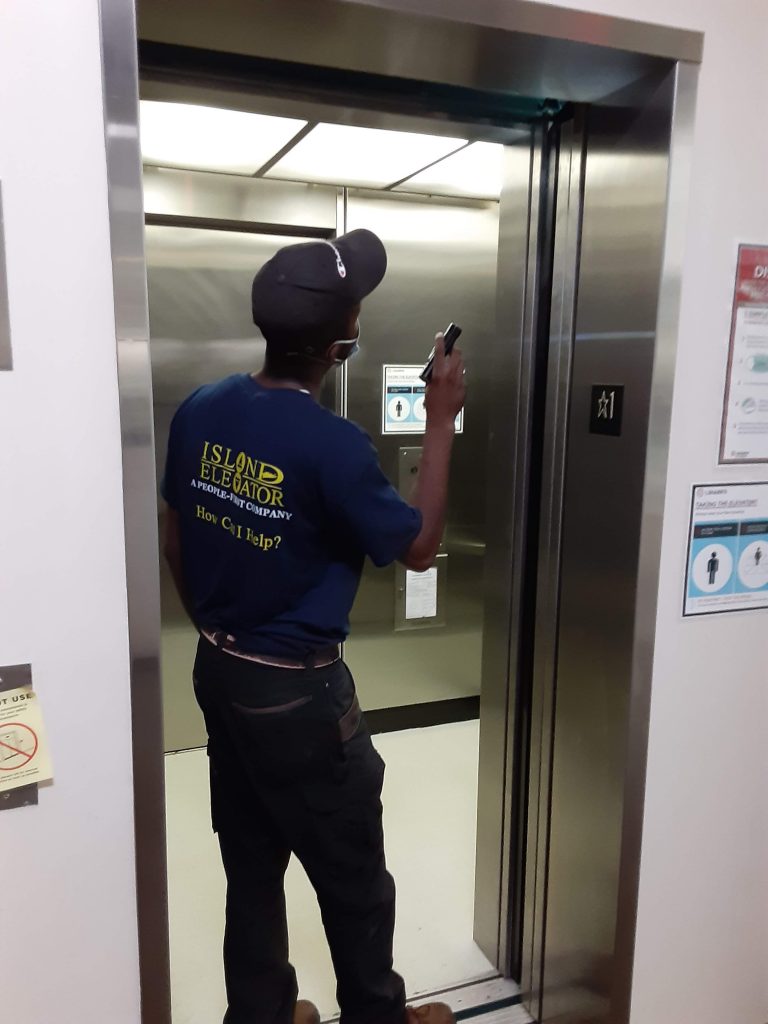
Inside the Car
Inside the car, there are five items you need to be able to check off your list. First, the doors should open and close without any obstructions. Check that they are not bouncing or slamming when they shut.
Second, look for any damage to the interior of the elevator. You may find damage to the handrails, ceiling, floors, walls, or buttons.
Third, replace any burnt-out light bulbs within the car. These are often located overhead and in the panel behind the buttons.
Fourth, ensure that the emergency stop feature is fully functional. You might consider checking it at the beginning of your inspection and the end.
Fifth and finally, make sure that the emergency phone connects to the local police or fire stations. If the phone does not connect quickly enough, you may have a problem on your hands.
Checking off each of these five interior maintenance tasks will allow your passengers a comfortable and safe ride. The mechanics outside and inside of the car need to work to ensure elevator safety.

Outside the Car
Maintaining the outside of the elevator is just as important as the inside of it. There are three things you must do before moving on.
First, make sure all the lights on each floor are lit and working properly. Unlit elevator buttons can confuse the passengers. You will need to replace any bulbs that are burnt out.
Second, inspect the door panels for any damage or dents. The doors should open fully on each floor properly.
Third, test the smoke alarm and fire detectors on each floor.
Much of the inside and outside inspections of the car need to be done daily by you or other staff. Keeping track of visible damage and functions to report to your elevator maintenance person is a way to make sure nothing is missed.
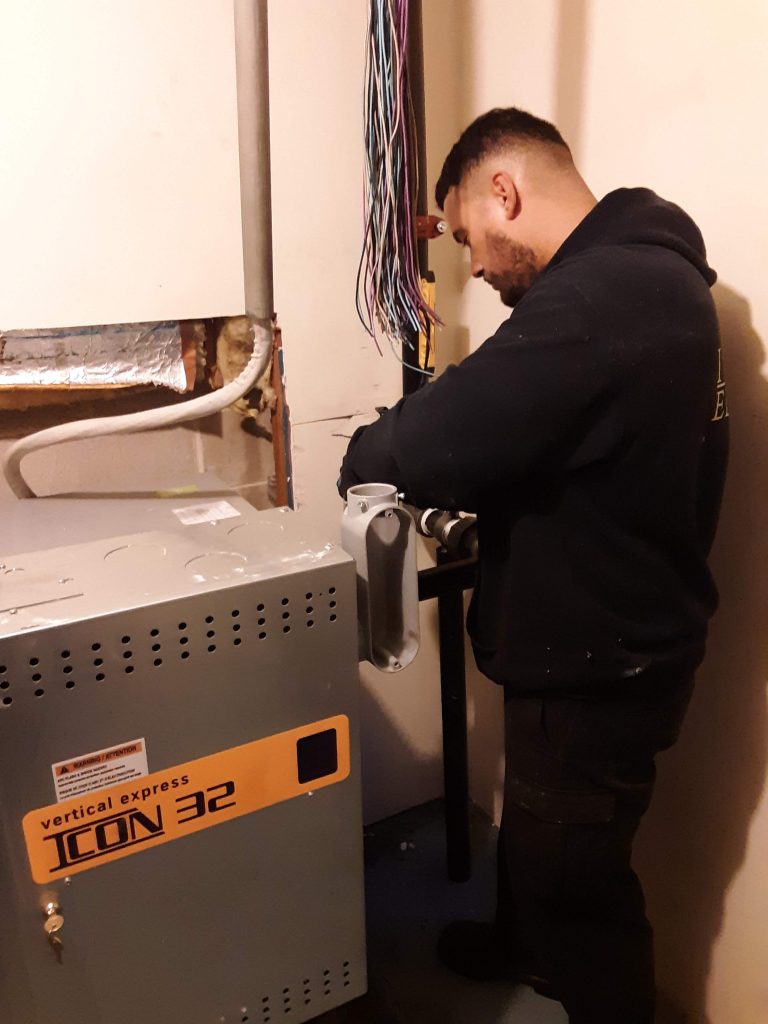
On Top of the Car
Some advise that only professionals carry out your maintenance checklist on top of the car. There are five items they must check off their list before moving onto the next area of the elevator.
First, ensure that the emergency exit is easily accessible to passengers. It is important for fires and motionless elevators. An emergency exit that is difficult to open or blocked is useless in an emergency.
Second, find the brakes and make sure that they are in good working order. Inspecting the braking mechanism is essential to completing a full examination of the elevator.
Third, check the cables for any signs of damage or wear. Inspect their connections to be sure that their attachment is correct and safe.
Fourth, look for signs of vandalism or rodents along the hoistway. You may also need to clear debris from the top of the car to see more clearly.
Fifth, inspect all visible elements. This includes leveling devices, rollers, and guide rails for wear, damage, and vandalism.
Any wear or damage found on any part above the car must be dealt with as soon as possible. The longer you wait to address an issue, the more likely your elevator repair costs will rise, and you risk passengers’ safety.

In the Machine Room
In the machine room, five things should go through an assessment. Nearly all machine rooms are on the ground floor of the building, but occasionally they are above the shaft. They are always near the elevator itself.
Start by addressing anything in the room that does not belong. Anything unrelated to the elevator needs immediate removal.
Second, check all components for wear, leaks, damage, and unusual vibration. If you find signs of any of this, it should be corrected immediately.
Third, look for overheating or failure in the electrical components. The electrical wiring may have fraying or defects, which you can see.
Fourth, inspect the oil levels and make sure that all the systems are lubricated properly. It should not be necessary to refill every time you perform elevator testing and inspections.
Fifth, ensure there is adequate headroom for technicians to work. Make any adjustments necessary for the machine room within your ability. Then, schedule a follow-up service with your elevator repair person.

In the Pit
There are six elevator maintenance tips associated with the pit. The pit is located below the ground floor. It is the core of your elevator’s foundation. When your elevator’s pit is not in proper condition, your elevator is not safe.
First, ensure that there is proper access to the pit. There should be a pit access door that shuts and locks itself for safety. If this door is broken, missing, or unable to be opened, that is the first thing you should address.
Second, examine the pit to make sure it has the necessary clearance to work inside. Without easy access, you can not perform the rest of your duties within the area.
Third, find the lights, GFI outlet, and stop switch. Check that they are in working order before you continue.
Fourth, clean the pit of any debris or dirt. Then check for any leaks that may have sprung since your last check-up.
Fifth, inspect all the spring buffers for any alignment issues, damage, or corrosion. Spring buffers are used to cushion the elevator and must be in good condition.
Sixth, look over other visible components. This includes the rollers, switches, safeties, and guide rails. Any damage must be reported.

How to Carry Out Elevator Testing and Inspections
Carrying out full elevator testing and inspections is necessary for elevator compliance. Yet, they can be simple when you have the right checklist and the right people to go through with it.
You must follow the four following steps to finish your elevator inspection thoroughly.
- Perform maintenance on a regular schedule
- Identify problems and address them right away
- Ensure that each area of the elevator is in proper condition
- Adhere to a complete checklist to know your elevator units are working
Once the entire inspection finishes, a maintenance report needs to be created. It will summarize everything that was checked off the list and address all issues found on the elevator.
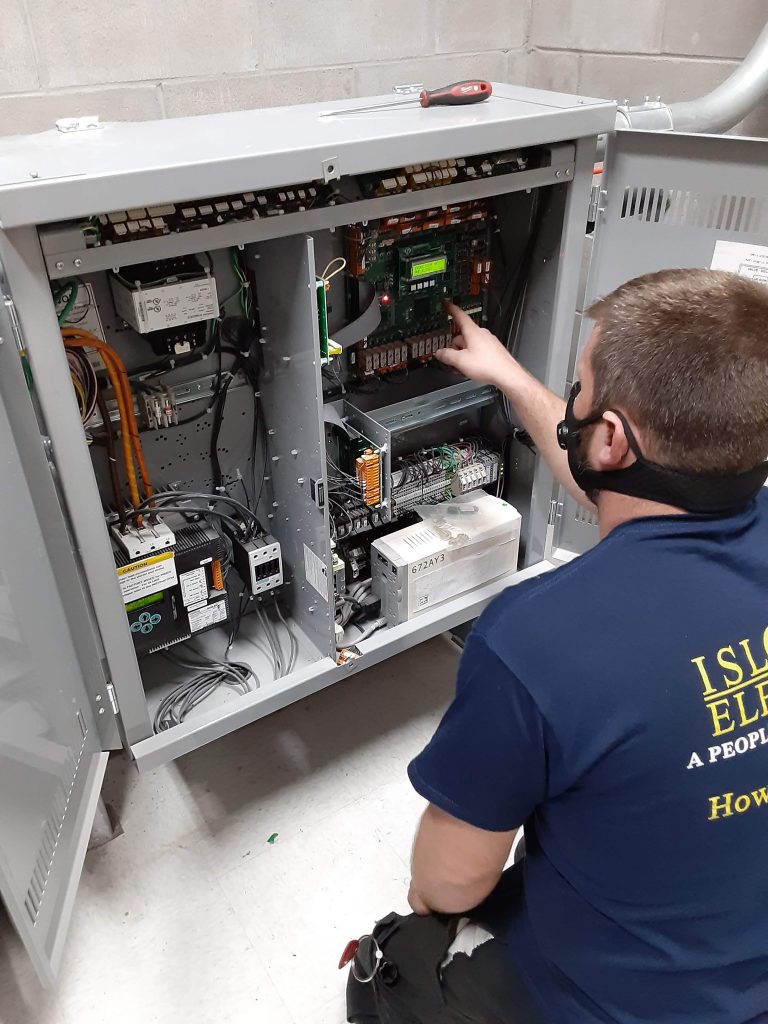
Elevator Maintenance and Servicing Requirements
There are some elevator maintenance requirements set by The National Institute for Occupational Safety and Health and The American Society of Mechanical Engineers. Elevator contractors and owners must follow them.
- The requirements include the following points.
- Periodic inspections and preventative maintenance
- Maintaining all components that operate the elevator
- Testing electrical equipment
- Maintaining safety equipment
Always be sure to prepare before beginning maintenance or service. You must communicate with others in the building, audit the tools, and have protection from electrical or falling risks.

When Elevator Repair for Elevator Compliance Is Necessary
A comprehensive elevator maintenance checklist is essential. You need to have a fully functioning and safely operating elevator. Elevator compliance is not a difficult thing to meet when you have the right people and tools.
Elevator testing and inspections ensure that you are on top of any necessary elevator repair. It keeps your costs lower and your passengers happy.
When you need elevator repair and maintenance, contact us for a free estimate.

Island Elevator is Ready to Help!
Island Elevator is here to help you understand all facets of your Elevator Repair, Maintenance, & Modernization costs in the new year. Our team is here to help ensure your home and business vertical transportation equipment receive the regularly scheduled maintenance necessary to help you avoid a major catastrophe, reduce the possibility of a costly repair, and ensure the safety of your passengers, tenants, and family.

